'It's frightening' | Before Huntersville spill, Colonial Pipeline had jet fuel spill in NW Charlotte resulting in soil, water contamination
A WCNC Charlotte Defenders investigation unearthed new details after 17,000 gallons of jet fuel spilled at Colonial Pipeline's northwest Charlotte tank farm.
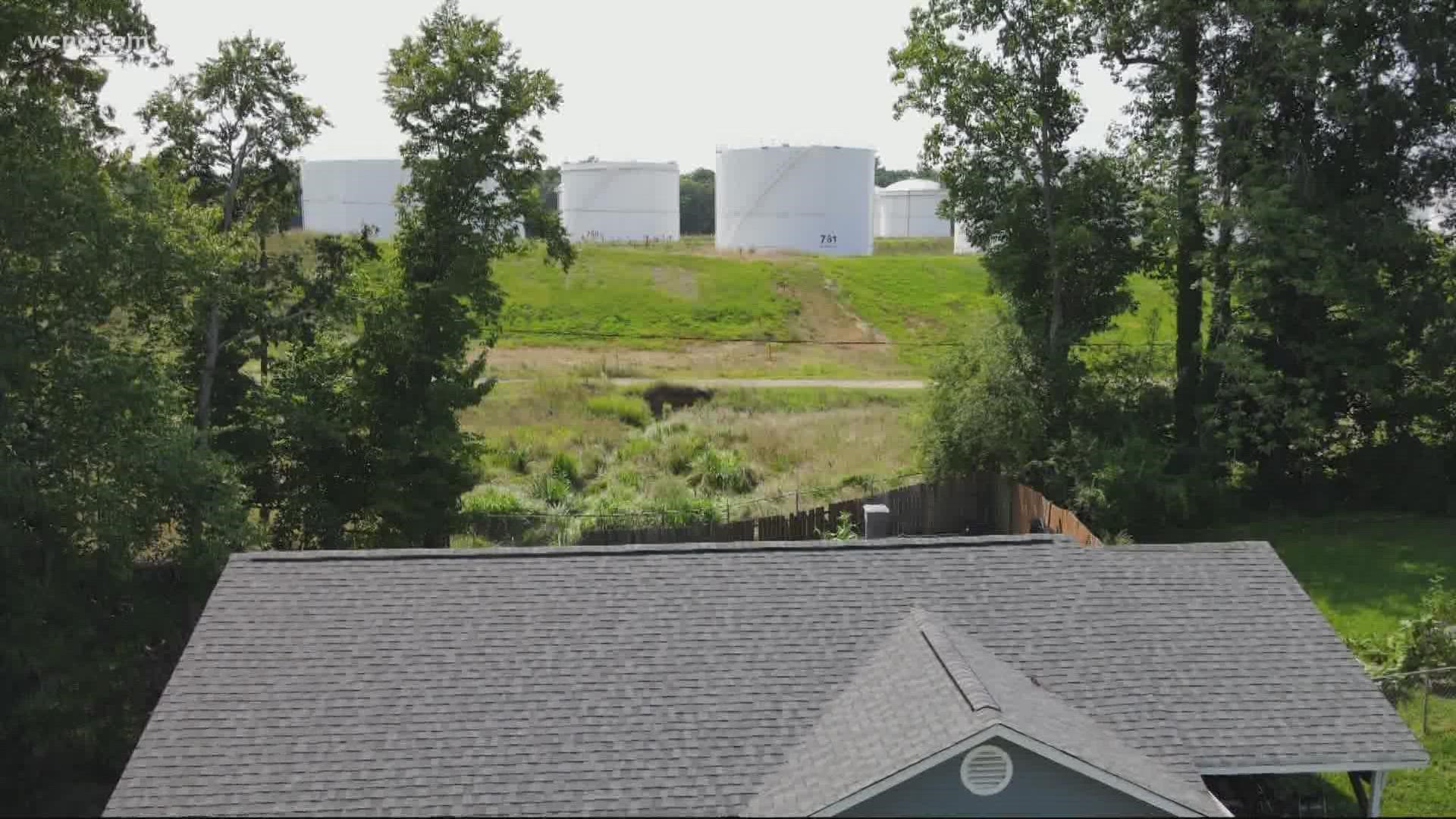
This August marks one year since two teenagers discovered what became one of the largest fuel leaks in recent history.
Colonial Pipeline is still cleaning up an area in Huntersville, where a section of pipeline cracked and leaked more than a million gallons of fuel.
The ongoing incident has garnered national attention, but a WCNC Defenders investigation found at the same time Colonial Pipeline was cleaning up its Huntersville spill, it was still quietly analyzing the impacts of another spill in northwest Charlotte on Dec. 31, 2018.
'I smelled this gas'
Leroy Patterson's backyard overlooks a farm, but it's not the kind of farm with crops and cows.
Instead of white cows with black spots, he sees hulking white cylinders capped by geodesic domes, with black numbers printed near the bottom of the curved walls.
Each cylinder holds thousands of gallons of jet fuel, which make up Colonial Pipeline’s northwest Charlotte tank farm, located off Mount Holly Road.

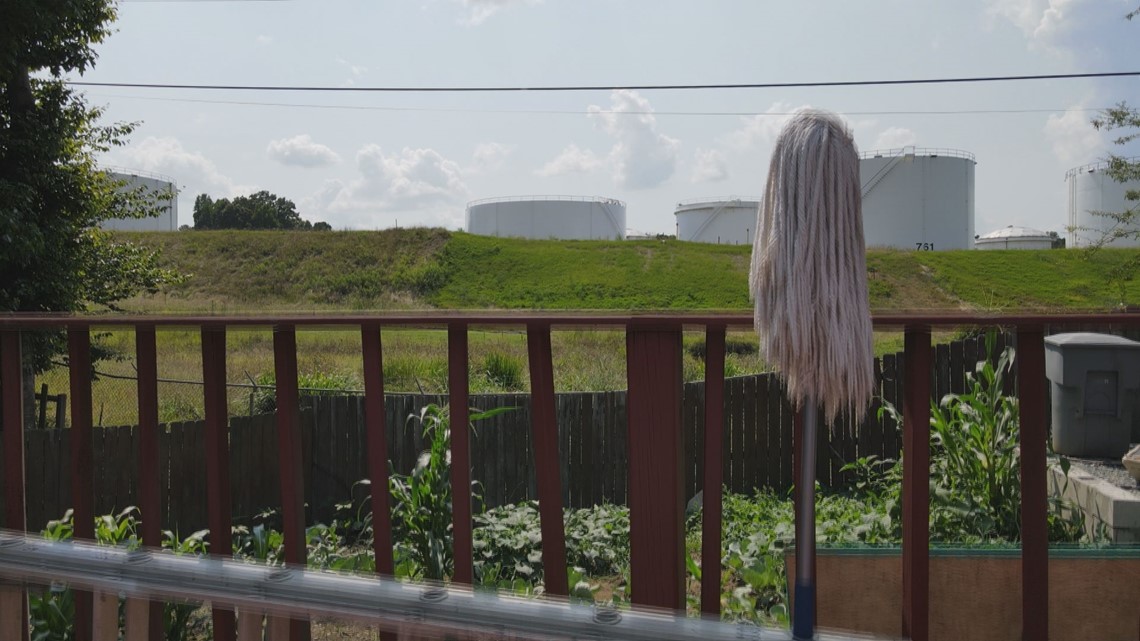
Around New Year's Eve 2018, Patterson was coming home from work when he noticed an unusual smell.
"I smelled this gas," Patterson recalled. "So I looked around and didn’t see anything. Then in the following day, I saw a number of people over there."
Patterson continued, "I saw the fire truck, and then I later learned that it was [a] spill."

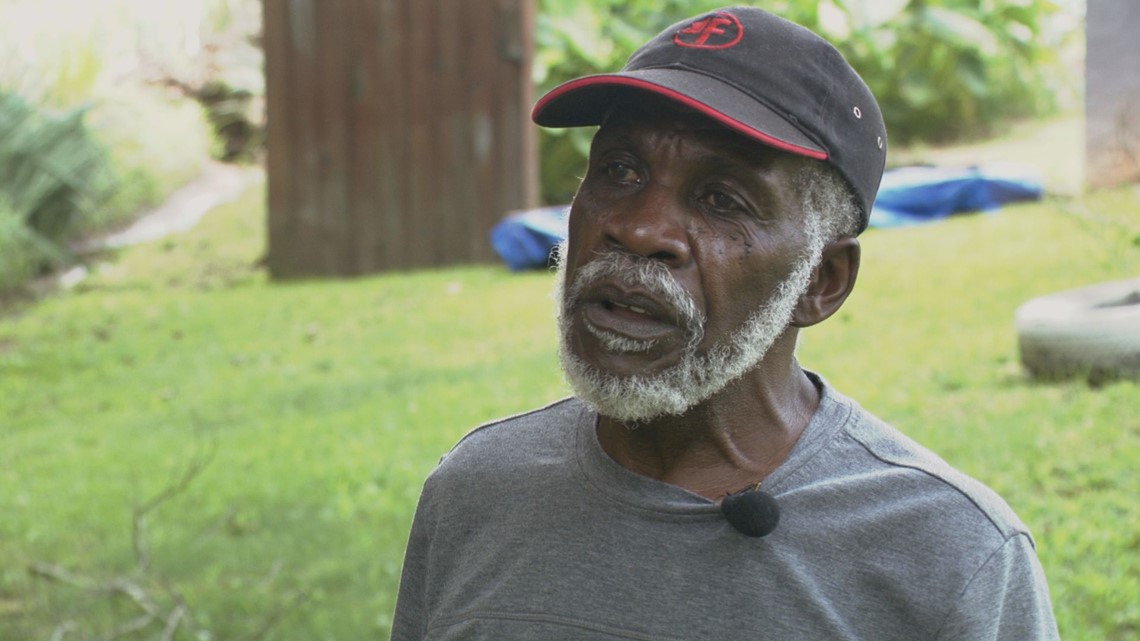
What Patterson didn’t know was that a Colonial Pipeline technician smelled that same fuel and began investigating.
According to an accident report the company filed with the U.S. Department of Transportation's Pipeline and Hazardous Materials Safety Administration (PHMSA), it took crews three days to find the source: jet fuel leaking from a pinhole in a section of 1963-era pipe, which fed one of the tanks.
The tank was located 320 feet away from Patterson's house.
For months, he watched from his back porch as excavators dug up, according to the accident report, more than 8,000 tons of contaminated soil.
"At any point, did they tell you how much was spilled here?" WCNC Charlotte's Brandon Goldner asked Patterson.
"No, nothing," Patterson said.
"So we found out what they discovered there," Goldner told Patterson. "They said it was 13,000 gallons."
"Wow!" Patterson exclaimed. "We have never heard anything about the contamination, how much spilled."
'Inadequate inspection'

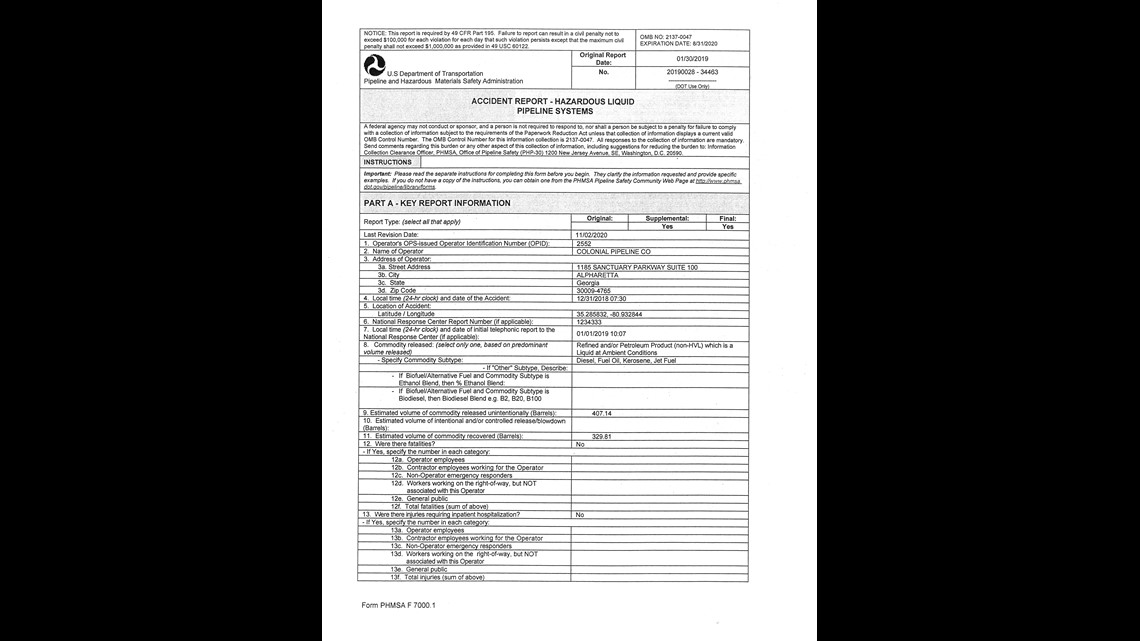
Further examination by WCNC Charlotte revealed the 13,000 gallons of spilled fuel was only what workers were able to recover.
In the accident report, Colonial Pipeline said the pipe leaked an additional 3,200 gallons of jet fuel that were never recovered.
A company spokesman said, "Our crews responded immediately to determine the location and cause of the tank line release at our Charlotte facility."
However, the spokesman said, "location and safety concerns forced crews to excavate the area by hand, which limited progress during the response because of the limited working space, the depth of excavation, and manual methods required."
He said the spill was contained to the company's property and never posed a risk to neighbors.
But according to the Colonial Pipeline's own reports following the Northwest Charlotte spill, visible sheens were spotted in a tributary leading to the Gum Branch, which served as a water source for Belmont and Mount Holly.
The company said only about 10 gallons of fuel leaked into the tributary and a facility pond.
A spokesman said workers immediately created underflow dams to capture and contain the fuel.
A spokesman said, "In addition to our underground monitoring wells, which confirmed product remained inside Colonial's facility, surface water monitoring conducted immediately after the release demonstrated no detections of petroleum constituents were observed downstream of the pond on our property."
However, the company's Initial Abatement and Assessment Report revealed water sample collection didn't begin until 24 hours after the leak was first detected.
In January 2020, after more than a year of clean-up, one of Colonial Pipeline's own compliance coordinators blamed the leak on corrosion inside the pipe and cited inadequate inspection and planning as contributing factors.
'Risk to public health, safety or the environment'

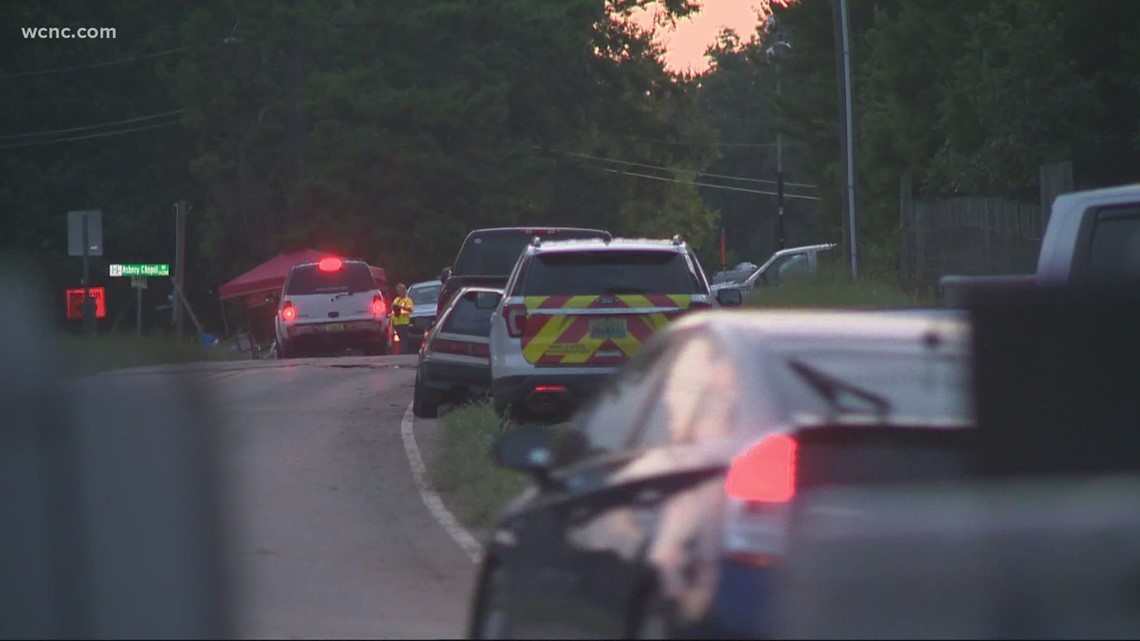
On Aug. 14, 2020, Colonial Pipeline reported what would become one of the largest fuel spills in recent U.S. history.
More than 1.2 million gallons of petroleum spilled near Huntersville after a section of the pipeline cracked.
According to PHMSA and other documents, the company had no clue about the spill until two teenagers discovered it.
A Colonial Pipeline spokesman argued comparing the spills in Huntersville and northwest Charlotte is akin to comparing apples to oranges because each incident involved different equipment and procedures.
However, after the Northwest Charlotte tank farm spill, the company's own compliance coordinator said the company would, "consider installing internal monitoring system tools in areas known for higher risk of internal corrosion."

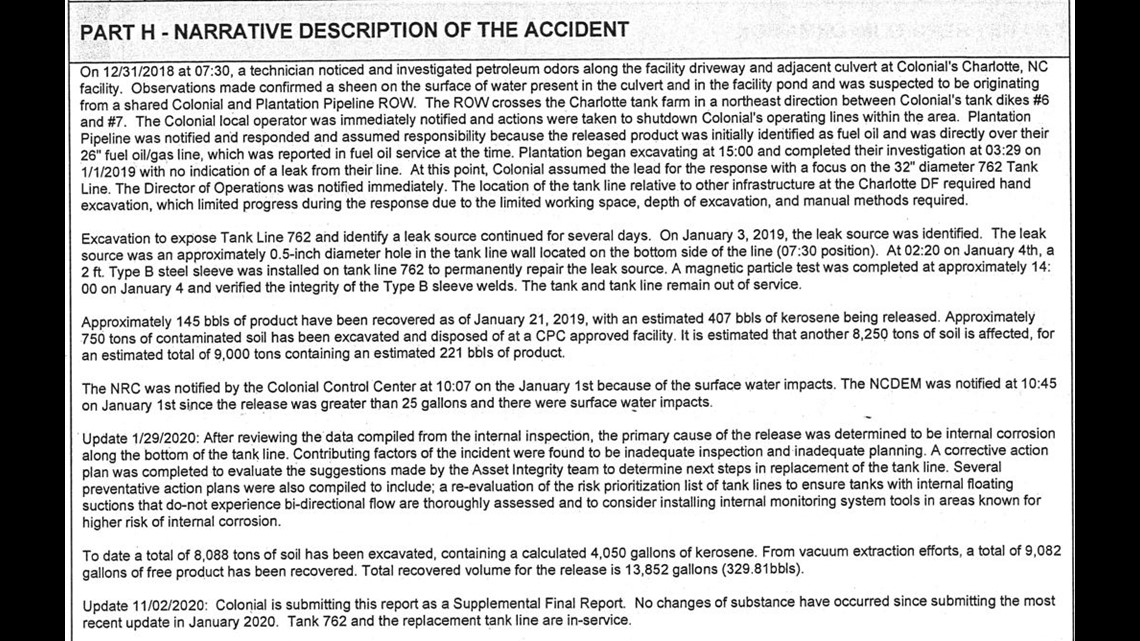
In PHMSA's proposed safety order after the Huntersville spill, the agency slammed Colonial Pipeline's "...inability to effectively detect and respond to this release, as well as other past releases."
PHMSA warned, "the continued operation of the Colonial Pipeline System without corrective measures would pose a pipeline integrity risk to public safety, property, or the environment."

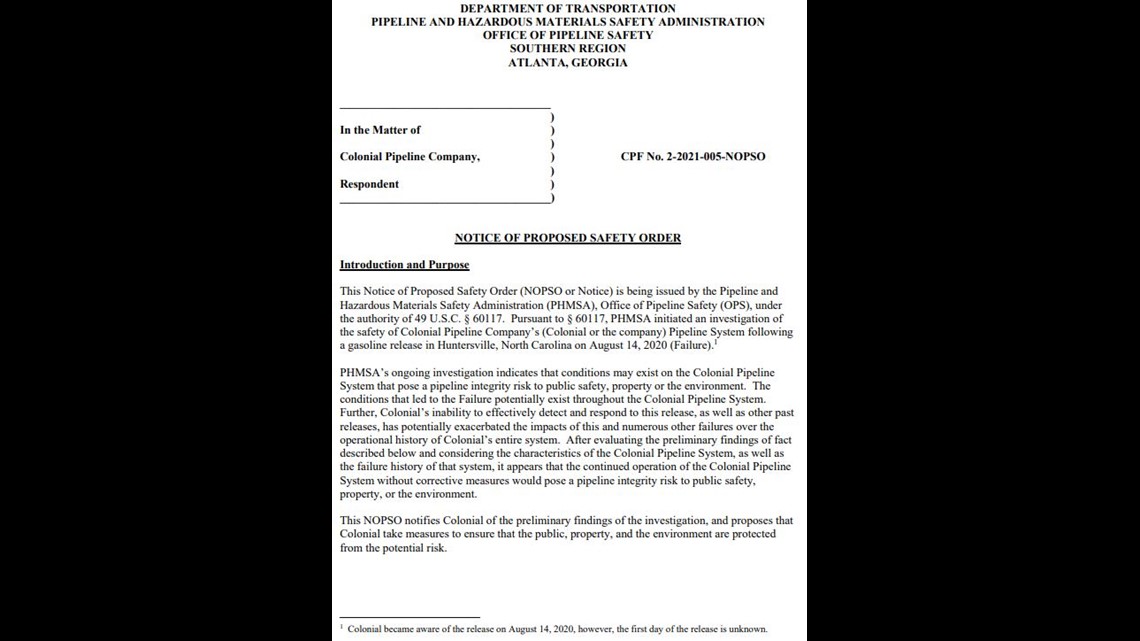
In an email, a company spokesman said, "The response to both the Charlotte tank farm event and the Huntersville release and the lessons learned from each are at the core of our Safety Management System, which facilitates a process that takes learnings from operational and safety events and shares and applies those learnings across our entire organization. It is a proven and tested process and enhances the safety of our system."
Fear Along Merrily
Back on the 320-foot range between the tank farm and his porch, Patterson said he’s been closely following the Huntersville spill.
"It’s frightening when I heard the amount that has been spilled," Patterson said. "It was really frightening."
Patterson wants Colonial Pipeline to be more transparent in the event of any future spills near his house.
"I think they should have been more upfront with it," Patterson said. "We don't really know what's going on."
Contact Brandon Golder at bgoldner@wcnc.com and follow him on Facebook, Twitter and Instagram.

